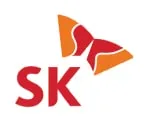The global collaborative robots market was valued at $1.8 billion in 2024. This market is expected to reach approximately $4.5 billion by 2035, growing from an estimated $1.91 billion in 2025, at a CAGR of 8.9% during the forecast period of 2025–2035. A collaborative robot is defined as a robot specifically designed for interaction with a human within a defined and safeguarded workspace where the robot and a human can perform tasks simultaneously during automatic operation. Growth of collaborative robot market is mainly attributed to the factors such as advancements in human-machine interface to enhance industrial production, rapidly evolving advanced software to enhance human safety, and increasing adoption due to ease of programing of collaborative robots. Moreover, the rising implementation of collaborative robots in non-manufacturing applications such as logistics and packaging; and declining prices are some of the factors boosting the adoption of collaborative robots.
Here are the top 10 companies operating in the Collaborative Robots Market
ABB
Founded in 1883, ABB is headquartered at Zurich, Switzerland. The company is a leading player in digital transformation. The company operates in four customer focused leading businesses: Electrification, Industrial Automation, Motion and Robotics, and Discrete Automation supported by ABB AbilityTM digital platform. ABB Ability TM provides around 160 solutions utilizing the latest technologies such as machine learning and artificial intelligence.
The company has its geographical presence in Europe, Asia, America, Middle East and Africa.
FANUC
Founded in 1956, Fanuc is headquartered at Oshino-mura, Yamanashi Prefecture, Japan. The company is engaged in the development, manufacturing, sales, and maintenance of CNC systems, robots, robomachines, lasers, and robocut. FANUC operates through three business divisions: Factory Automation, Robot, and Robomachine and Service.
The company has its geographical presence in Japan, America, Europe, and Asia with is subsidiaries- FANUC Europe Corporation S.A. and FANUC American Corporation
KUKA AG
Founded in 1898, KUKA AG is headquartered at Augsburg, Germany. The company manufactures industrial robots and solutions for factory automation. As a leading supplier of industrial automation solutions, KUKA offer its customers a full range of products and services from a single source: from the core component – the robot – to production cells, turnkey systems, and networked production with the aid of cloud-based IT tools.
The company has its geographical presence in Europe, North America, and Asia-Pacific.
Universal Robots A/S
Founded in 2005 and headquartered at Odense S, Germany, Universal Robots, a subsidiary of Teradyne, Inc. is a company that provides collaborative robots and UR+ product platforms to various enterprises. The company’s e-series collaborative robot is a light weight as well as easy to program and use in day to day production. Teradyne, Inc. was founded in 1960 and is a leading supplier of automation equipment for test and industrial applications. The company is involved in the manufacturing of test systems for various segments such as semiconductors, data storage, wireless products, and complex electronic systems. The company operates into four business segments: semiconductor test, system test, wireless test, and industrial automation.
The company has its geographical presence in Asia-Pacific, Europe, and North America.
Rethink Robotics
Founded in 2008, Rethink Robotics is a subsidiary of HAHN group. The company provides innovative automated solutions to the manufacturing industries. The company’s swayer black edition collaborative robot is the smaller and flexible version of the robotic solution. The company revolutionized the use of robots in research and industry.
HAHN Group is a group of companies specialized in industrial automation and robotics. The company has its production sites in around 24 locations with customers from automotive, healthcare, consumer goods, and electronics industries
YASKAWA Electric Corporation
Founded in 1915, YASKAWA Electric Corporation is headquartered at Kitakyushu, Japan. The company manufacturers AC motor drives, switches, and robots. The company’s Motoman robot is heavy duty industrial robot that is used in welding, packaging, assembly, material handling, and general automation. The company operates through three core business segments: Motion Control, Robotics, and System Engineering.
The company has its geographical presence in Japan, America, Europe, and Asia
F & P Robotics AG
Founded in 2014, F& P Robotics AG is headquartered at Zurich, Switzerland. The company provides personal and collaborative robotic solutions to small and medium enterprises and innovative products to healthcare sector such as mobile service robots. Its presentations at the international trade fairs, such as World Robotics Conference in China, have made F&P known internationally.
Techman Robot
Founded in 1998, Techman Robot (a subsidiary of Quanta Computer Inc.) is headquartered at Taoyuan city, Taiwan. The company provides collaborative robots and vision technologies.
Quanta Computer Inc. is headquartered at Taoyuan city, Taiwan and is a leading notebook manufacturer. Apart from notebook manufacturing business, the company is also engaged in cloud computing business, enterprise network solution, mobile communication products, smart home products, smart healthcare, IoT, and AI applications. The company has major geographical presence in Americas, China, Netherland, and Japan.
Kawasaki Heavy Industries Ltd.
Founded in 1896, Kawasaki Heavy Industries Ltd is headquartered at Tokyo, Japan. The company is a leading manufacturer of motorcycles, heavy equipment, aerospace & defense products, rolling stocks, and ships. It is also active in the production of industrial robots, boilers, gas turbines, and other industrial products.
The company has its geographical presence in Japan, Europe, Asia, and USA.
Doosan Robotics Inc.
Founded in 1896, Doosan Robotics Inc., a subsidiary of Doosan Corporation, is headquartered at Seoul, South Korea. The company is engaged in the development, manufacturing, sales, and maintenance of collaborative robots for a variety of application such as assembly, machine tending, inspection, gluing and bonding, polishing, packaging & palletizing, and pick & place. Doosan operates through seven main business divisions: Electro-Materials BG, Mottorol BG, Industrial Vehicle BG, Doosan Digital Innovation BG, DHC, and DI & DEC. Doosan robotics is a part of the Doosan Digital Innovation BG.
The company has its geographical presence in Korea, Asia, USA, Middle East, and Europe.
Popular Mentions: STAUBLI, Aubo Robotics, Mabi Robotics AG, and Precise Automation, Inc.























